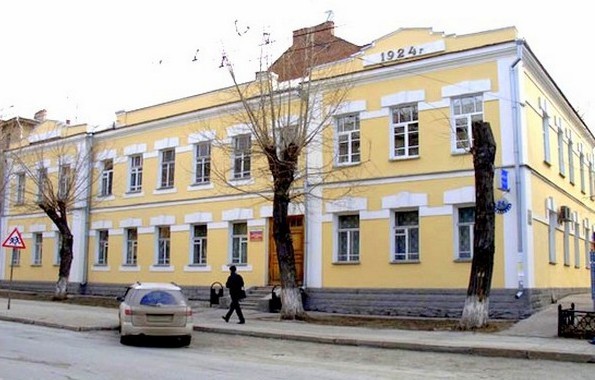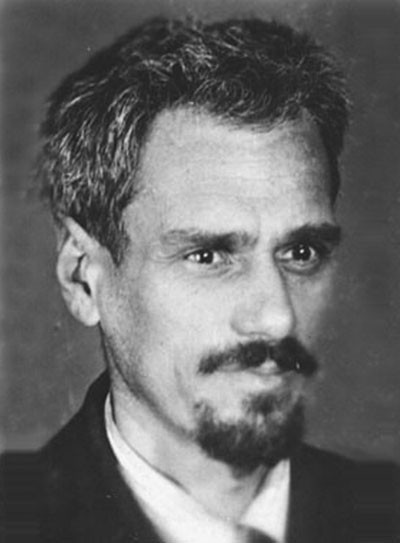Y. V. Kondratyuk Museum (now – The Museum of Novosibirsk)
The Museum of Novosibirsk opened on March 1, 2010. They planned to continue construction on the museum in 1943 to commemorate the 50th anniversary of our city, but, for obvious reasons, this did not happen.
The building that houses the museum has regional historic importance as it is the house where Y.V. Kondratyuk once worked. The building was constructed in 1924.
Here, from 1927-1930, worked Yuri Kondratyuk (Alexander Shargei), one of the founders of Russian and world cosmonautics. It was in this building that Kondratyuk finished a complete edition of his book, The Conquest of Interplanetary Spaces, which put him among the great researchers of the cosmos.
Since 1993, the Yuri Kondratyuk Memorial Museum has operated in this building. Today, the Memorial Museum occupies two halls of the second floor. In the museum exhibit are original documents, rare books, and unique miniatures of spacecrafts.
The exhibits and funds of the Yuri Kondratyuk Memorial Museum became the foundation for the formation of the city’s museum. Four halls on the first floor of the building are supplied with multimedia equipment. The exhibits and the other museum operations are accompanied by film screenings and slide shows using “retro equipment,” including a 19th-century music box, a Soviet radiogram, movie cameras, and more.
In 2010, the museum announced exciting exhibition projects, including: “Novosibirsk’s Contribution to the Great Victory,” “The Twin Cities of Novosibirsk,” “City of Astronomy,” “The Entertainments of City Youth,” and “Novosibirsk: The People, the City.”
In 2011, the museum opened The Center of Oral History, which was a joint project of the museum and the Institute of Archaeology and Ethnography, the Siberian Branch of the Russian Academy of Sciences. The center collects oral materials in order to create a single city archive of oral and visual texts, which have been systematized by audio, photo and video collections.
The last Thursday of every month, the museum invites citizens to a meeting in the reception area for a program called “Stories of Novosibirsk.” Here, with the help of ethnographers, historians, journalists, and writers, they open unknown or forgotten pages of Novosibirsk’s history.
Partners of the Museum of Novosibirsk include other museums, educational and cultural organizations, and inhabitants of the city who have lent or donated unique documents, photographs, and other items.
The Museum of Novosibirsk is actively involved in educational activities and organizes traveling exhibits and other cultural-educational projects.
In the halls of the Museum of the city’s history, one can navigate various joint exhibits from the collections of small museums, dedicating the exhibits to a small jubilee regarding city life, (culture, medicine, trade, etc.), freestanding historical events, and honorable citizens and people of merit.
The museum doors are always open for guests, friends, and partners!
Novosibirsk City Museum organizes excursions not only within its building but also in the city. We are happy to offer you walking, bus, car and trolleybus tours around the city. The tour route can be arranged with the management of the museum beforehand and can be changed if you wish. There is a wide variety of tours for different age groups, who want to find out more about our city.
Tours are organized along historic places of Novonikolaevsk-Novosibirsk. You will see historical monuments and beautiful architecture. You will have a chance to learn about the legends and tales from old citizens and feel the atmosphere of the beginning of the city.
Tours around the city are the best ways to learn about Novosibirsk and experience it.
You can buy tickets at Novosibirsk City Museum (24 Sovetskaya Street, Metro Station “Lenin square”).
Tel.: 222-67-42 or 89137350337
Monday-Friday 9 am – 6pm
Saturday-Sunday 10am – 13 pm
The Y. V. Kondratyuk Museum opened in 1993 at Number 24 on Sovietskaya Street. Here, the genius worked for three years in the modest office building of “Khleboprodukt” (Cereal Products). Kondratyuk is famous not only for his name, but also for his background in Novosibirsk. The museum is named after this scientist, one of the pioneers of Russian space exploration.
The first room is dedicated to the amazing fate of Yuri Kondratyuk (real name Alexander Ignatievich Shargey) and his literary heritage. The exhibition presents historical photos and layouts of grandiose structures erected according to Kondratyuk’s projects, as well as photographs and various scale models showing the implementation of his ideas about outer space.
Here, it is as if time has stood still: old office furniture, an employee’s shabby briefcase and a seated man who looks very similar to Kondratyuk …
The exposition in the second room features “Space Exploration and the Capital of Siberia”. It presents models of the first artificial Earth satellite, equipment, samples of Russian astronauts’ nutritional and hygiene products, a collection of space clothing, and modern-day astronauts’ chairs with seat liners for reclining, and many other different items. .
The main inventory of the museum consists of 278 items and more than 6.5 million additional scientific research materials. These include unique documents and artifacts, an extensive video library, and a vast library.
The Y. V. Kondratyuk Museum pursues educational work. This includes traveling exhibitions, video screenings, creative and intellectual competitions, and educational television programs about outer space for children of all ages.
Since 1994, the museum has organized “Space and I”, an international art contest for children and youth.
Excursions by phone. 222-67-42
On June 9 O.S. (21 N.S.), 18971, a son, Alexander, was born to Ignat Benediktovich Shargei, a student, and Ludmilla Lvovna (neé Shlippenbach), a teacher, in Poltava, Ukraine. He would become a scientist and a pioneer in rocket construction and space exploration, known the world over by the name of Yuri Vasilievich Kondratyuk.
This individual’s name rightly stands alongside the names of such eminent scientists as K.E. Tsiolkovsky, N.I. Kibalchich, and F.A. Zander.
Childhood and Youth His childhood was first darkened by the early death of his mother and then his father as well. He was raised in the family of his grandfather, the doctor A.N Datsenko. In 1910, at the age of thirteen, Alexander Shargei enrolled in the third form at the second Poltava boys’ gymnasium. From very early on, the young boy showed an aptitude for inventing.
“From the age of sixteen years old- since I determined the feasibility of spaceflight-this goal became the whole purpose of my life,” he wrote to Tsiolkovsky in 1930. As a result of his work during this period, he found almost all of the fundamentals of rocket flight (without a detailed process and often without specific mathematical argumentations). He also identified the optimum projection trajectory and specific mathematical derivations, which he subsequently included in his famous book, Conquest of Interplanetary Space, under the name of Yuri Kondratyuk.
Studies and the Army
In 1916, A. Shargei, a very tall, lanky young man with a keen glance and big, dark eyes like coal, graduated from the Poltava gymnasium with a silver medal. That same year he enrolled in the Petrograd Polytechnical Institute. However, after two months of studies he was conscripted into the army, as World War I was occurring. After finishing military training, A. Shargei was sent to the Southern Front. But while in the trenches, using every spare minute, he continued his cosmic calculations. Already towards the end of 1916, A. Shargei essentially finished his first manuscript, To Those Who Would Read When Building [a Spacecraft].
Alexander Shargei did not even suspect that K.E. Tsiolkovsky was living somewhere in Kaluga and was studying the same topic. In 1918, the young inventor found a note about Tsiolkovsky’s rocket in one of the old issues of the magazine Niva, but he only got The Bulletin of Aeronautics, which the note about Tsiolkovsky cited, in 1925, when his own work was already coming to an end. Of course, Shargei was disappointed that he was not the first and only researcher in that field, but at the same time he saw that K.E. Tsiolkovsky not only repeated some of his research findings using completely different methods, but Tsiolkovsky also introduced new material to the theory of interplanetary flight.
The Russian Civil War began, and Warrant Officer A. Shargei, having been demobilized from the army, wound up “in arms” again. This time he was forcibly mobilized to General Denikin’s White Army. Alexander fled while being dispatched to the front. Thus, he lived for two years without documents, scraping by with odd jobs, and being under the risk of arrest.
How Shargei became Kondratyuk
In 1921, A. Shargei assumed the identity of Georgii (Yuri) Vasilievich Kondratyuk – a student from Kiev University who had died of tuberculosis – and obtained a passport in his name. Thus Shargei transformed into Kondratyuk and he lived under somebody else’s name for the rest of his life, entering the history of world cosmonautics under this pseudonym.
It was a difficult and dangerous time; any evidence that Shargei had been demobilized in Denikin’s army could have cost him his life.
Consequently, Shargei-Kondraty
His attempts to print this book in Moscow were met with failure, despite the positive review it garnered from V.P. Vetchinkin, a renowned scientist and a specialist in the field of aerodynamics. For all of the years that followed, V.P. Vetchinkin strongly supported Kondratyuk as an original scientist.
Kondratyuk in Novosibirsk
In August of 1927, at the invitation of the regional office “Cereal Products”, Y.V. Kondratyuk arrived in Novosibirsk and spent the next five years there. He worked as a mechanic, and later as an engineer, in the regional office “Soviet Union Bread” (which was located in a building at 24 Soviet Street). He carried out work related to the construction and repair of elevators and granaries throughout the Siberian region.
It was here in Siberia that Y.V. Kondratyuk’s most significant installations were built. As part of the complex for grain storage in the Altai region (in the city of Kamen-na-Obi), there was an elevator whose supporting walls were built without a single nail, and the famous granary “Mastodon”, which then gained status as the biggest wooden granary in the world.
Equally unique was his suspended bridge over the Aba River in Novokuznetsk. The Siberian mechanic Y.V. Kondratyuk calculated the load and strength of the bridge’s construction, and under his leadership a bridge of chopped wood was built. Unfortunately, not one of these structures still stands today due to the deterioration of materials, and also through human fault.
The Main Book:
In January 1929 in Novosibirsk, in the printing office of the Siberian Union building and with the author’s personal funds, which he received from his inventions and developmental engineering and also through his Spartan way of life, a book was published entitled “The Conquest of Interplanetary Spaces.” 2,000 copies of the book went into circulation, having 72 pages of text and 6 inserts with designs and diagrams.
With wonderful precision, Y.V. Kondratyuk examined in his book important issues, such as the apparatus of multi-stage rockets and engines, fuel composition, energy-efficient and optimal trajectories of space flights to the moon and other planets, as well as the establishment of interplanetary and intermediate bases, methods of returning to the Earth, and many other problems of interplanetary flights.
Y.V. Kondratyuk’s great hopes rested on his project about a multi-stage spaceship, at one stage, the combustion fuel can break away from the ship. A majority of the ideas proposed by the author have played out in modern space travel, but they were just ideas that until now were beyond human capabilities.
After the his book was published, Y. V Kondratyuk immediately directed one copy to K.E. Tsiolkovski and in exactly one month, he had received praise from him.
Denunciation and arrest:
In July 1930, due to false denunciations regarding Y.V. Kondratyuk and five of his colleagues, they were arrested and accused of economic sabotage by the notorious “Article 58”. He was convicted for three years in a labor camp and afterwards was sent to a mining factory facility on the outskirts of Novosibirsk. Before long, Y. V. Kondratyuk moved to a separate office, number 14, affiliated with OGPU, where he was involved in designing the equipment for coal mining in the Kuznetsk Basin. The special status of the bureau told the special situation of all employees, who carried the severe stigma of being “an enemy of the people”.
Whereas here in Novosibirsk, Y.V. Kondratyuk with his colleagues developed the original project of a wind-powered plant in Crimea, the likes of which did not exist then and still does not. It was a magnificent building, as high as a forty-storey house with special strong characteristics, which should withstand the pressure of sea winds on the mountain, Ai-Petri, higher than 1200 meters. This project was never implemented.
In 1933, when on business for the Crimean wind farm in Moscow, Y.V. Kondratyuk met with one of the future, main designer of spaceships, S. P. Korolev, who was sponsored at the time by GIRD (Group for the study of reactive motion). Korolev heard a lot about the young, talented Siberian and offered him a position in his group as a chief theorist. Knowing that every employee of GIRD passed a thorough examination of documents and biographies with the department of Red Army, Yuri Vasilevich, with agony in his heart, rejected the offer of working together.
War and Death?
The beginning of the war interrupted the scientific and creative processes of Y.V. Kondratyuk. Workers of the production and export complex VES signed up as volunteers and on the night of July 7, 1941, left on foot for the front composed of divisions of national militia of the Kiev region of Moscow. The following battle, in which he took part, took place on February 25-26, 1942, It was fought on the left shore of the Oka River, on the bridgehead between the populated areas of Vetrentsy and the Kravtsovsky settlements in the Orlovskii region. The battles then became difficult and bloody. The circumstances of Y.V. Kondratyuk’s death, and the time and place of his burial, are not known to this day.
In 1967, the General Assembly of the International Astronomical Society decided to name one of the craters on the far side of the moon after Y.V. Kondratyuk.
In 1969, after the landing of the American expedition Apollo 11 on the moon’s surface, the newspaper “Komsomolskaya Pravda” published a scientific article by V. Lvov called, “The Man Who Foresaw”.
In the article, there was a speech about the young, talented scientist and his contribution to the theory of space. In fact, this article even managed to bring Yury Vasilievich Kondratyuk back to memory. In the following year, 1970, the judicial college of criminal cases of the High Court of the RSFSR decided to terminate judicial action in a show of respect for Y.V. Kondratyuk and five of his colleagues. Y.V. Kondratyuk was fully rehabilitated and his good name restored. In honor of the talented self-taught scientist, today there is a square in Novosibirsk named for him, as well as streets in Moscow, Omsk, Poltav, Rubtsovsky, and a station on Krylov.
In 1993, a small planet (asteroid) was named after the scientist. It was the discovery of the astrologer N.S. Cherny of the Krym observatory. At the start of the 21st century, grateful descendants recognized Y.V. Kondratyuk as “The Novosibirsk Region’s Citizen of the 20th Century”.
And a Good Man…
From the recollections of V.V. Samodova, who worked with Y.V. Kondratyuk in Kavkaz: “Yury Vasilievich was an completely unique person. His kindness and humanity surpassed all limits. Receiving a salary, fees for his inventions, he kept money for himself only for sustenance and the absolute necessities. The rest he sent to help friends in need and to help the workers who turned to him. Yury Vasilievich was a homebody. He very rarely left the house, and when he did, it was only for a very short periods. Arriving at work, Yury Vasilievich would have lunch and then immediately sit down at his desk to work: he would write something, or sketch…He was a quite an adult, but, it was apparent that he loved youth. In his free time, he would tell good jokes, creating a warm situation so full of heart that the miseries of life vanished. And there were days, when he sat thinking for a long time, gazing at one point with his beautiful black eyes, like a young night.”
Ideas on Space Proposed by Y.V. Kondratyuk
- Proved that a rocket, without refueling, could not fly beyond the Earth’s gravity;
- Developed a theory on intermediate stations as artificial satellite planets;
- Expressed the idea of using solar energy combined with mirrors concentrated for the needs of space ships and the use of big mirrors orbiting artificial satellites for lighting planets;
- Derived the original method for the equation of a rocket’s movement;
- Proposed the use of wings for rockets returning to Earth;
- Examined the questions of functioning bases supply on the moon and the use of solar energy for getting fuel from lunar rocks;
- Developed a version of the expedition to a different planet in terms of its orbit;
- Recommended that astronauts enter open space through a gateway in special suits with their own air supply;
- Proposed to place astronauts in special individual seats, allowing them to store large loads during takeoff and landing.



